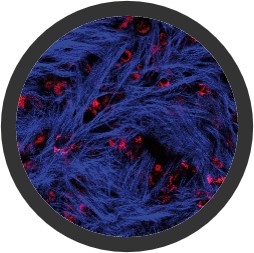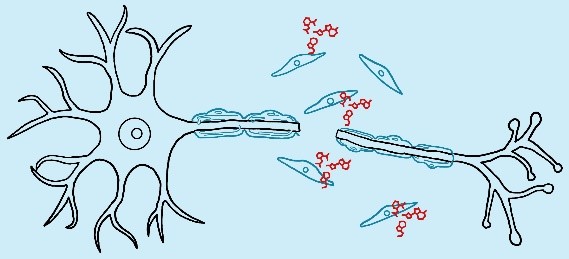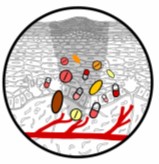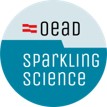
The skin, as the largest sensory organ of the human body, enables the perception of environmental stimuli such as temperature and touch. These stimuli are transmitted through a complex network of nerves that runs through the skin. When the skin is injured, a healing process immediately begins, in which Schwann cells - specialized cells of the nervous system - play a central role. Under certain conditions, these cells can contribute to the formation of particularly large and painful scars, known as keloids.
This project focuses on researching the role of Schwann cells in scar formation. Since no suitable models currently exist for studying keloids, developing a specific scar model is a key goal of this study. Additionally, the effectiveness of plant extracts, derived from various plants, will be tested in this newly established scar model.
The use of plants for medicinal purposes has a long tradition, deeply rooted in both traditional Chinese medicine and European practices. The "Flower-Power" project aims to harness local knowledge about medicinal plants that is still alive in many communities. This knowledge, partly recognized as intangible cultural heritage, will be made accessible for scientific research through collaboration with citizen scientists.
The project integrates three educational levels: an elementary school, a middle school, and a higher technical school (HTL). Additionally, the “Freunde naturgemäßer Lebensweise” (FNL) association - the oldest herbal association in Austria with around 7,500 members and over 1,000 experts - is involved in the project. An experimental workshop will be organized at the Vienna Open Lab for the elementary and middle school students, while a herbal workshop will be offered for all participants. The HTL students will produce extracts from the collected plants, which will then be tested for their effectiveness in the scar model. Furthermore, some HTL students will have the opportunity to present their results at scientific conferences.
This interdisciplinary project combines modern science with traditional knowledge, while also fostering scientific curiosity and practical learning among young people. It makes a valuable contribution to the development of new therapeutic approaches in scar treatment and the preservation and utilization of traditional plant knowledge.

Modelling Scar Formation in vitro
The primary challenge in scar research is the absence of adequate models that accurately mimic human pathological scars in both in vitro and in vivo settings. Thus, our primary objective is to establish in vitro models that closely replicates the situation observed in human pathological scars. Additionally, we aim to comprehensively analyze the interaction between Schwann cells, macrophages, fibroblasts, and keratinocytes in these models and to identify novel factors involved in the pathogenesis of hypertrophic and keloid scar formation. Understanding these factors could provide new insights for the development of novel therapeutic interventions.

The Role of Schwann Cells in Wound Healing and Scar Formation
Schwann cells, the glial cells of the peripheral nervous system, are essential for nerve maintenance and regeneration after injury. However, their dysfunction plays a pivotal role in the progression of pathological conditions such as keloids, schwannomas, and neurofibromas.
These disorders share common features, including excessive extracellular matrix (ECM) deposition, chronic inflammation, and aberrant cell signaling. Current treatments are predominantly surgical and fail to address the underlying cellular dysfunctions, emphasizing the urgent need for innovative therapeutic approaches. In keloids, Schwann cells adopt a repair-like phenotype, driving fibrosis through excessive ECM production and interactions with M2 macrophages. In schwannomas and neurofibromas, genetic mutations such as NF1 and NF2 result in persistent dedifferentiation and dysregulated signaling, leading to tumor growth and pathological tissue remodeling. These processes highlight Schwann cells as critical therapeutic targets across these conditions.
Our research leverages high-throughput drug screening (HTS) to identify small molecules capable of modulating Schwann cell behavior. Using primary Schwann cells derived from healthy, keloid, schwannoma, and neurofibroma tissues, we evaluate compounds for their effects on cell viability, morphology, and ECM production. Dose-response studies ensure the selectivity and efficacy of the identified compounds. To uncover the mechanisms of action, we employ advanced imaging techniques, such as two-photon microscopy, single-cell RNA sequencing, and proteomics. These methods allow us to investigate key processes, including Schwann cell dedifferentiation, immune interactions, and ECM synthesis, providing deeper insights into disease progression.

Bridging the Gap Between Skin and Heart
Cardiovascular drugs are widely used worldwide, primarily for blood pressure reduction and the prevention of coronary heart diseases. A clinical study has shown that the use of statins can reduce scar formation. Another study demonstrated that metformin inhibits collagen deposition in fibroblasts, suggesting a potential role in scar prevention.
Our research explores the therapeutic potential of cardiovascular drugs on cutaneous scar formation. By analyzing the transcriptomic effects of different cardiovascular drugs, we aim to identify potential therapeutic targets to improve wound healing and prevent the development of hypertrophic scars.
We are performing single-cell sequencing to examine the differential gene regulation induced by stimulation with cardiovascular drugs. This approach will allow us to identify potential signaling pathways that are regulated by such treatments, which could reveal promising therapeutic targets for wound healing and for preventing or reducing scar formation.

